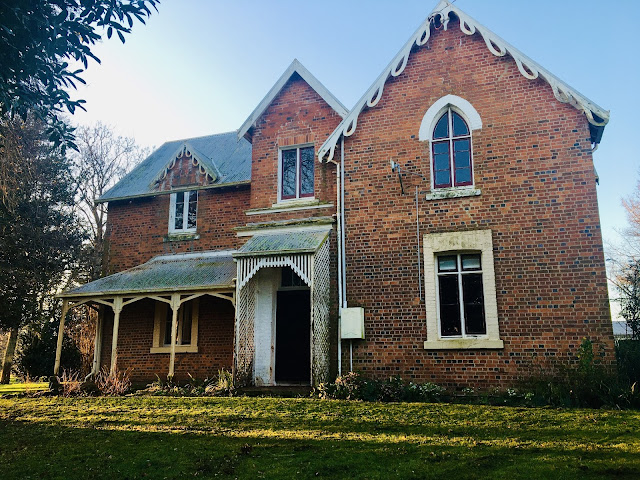No. 1197 - Hagley - St Mary's Parsonage (1861)
This article is one in a series about buildings associated with some of Tasmania’s most significant churches. These buildings include Sunday schools, parish halls, convents, schools and residences of the clergy. Ancillary buildings are often overlooked and are rarely featured in published histories. My aim is to create a simple record of these buildings, including those that no longer exist.
Hagley lies about 5 kilometres north-east of the town of Westbury. In the 1820s land grants were made to William Thomas Lyttleton, William Bryan and Sir Richard Dry. Lyttleton was associated with Hagley Hall in England, after which he named his estate; giving the town its name.
St. Mary’s Anglican Church is closely associated with the life of Sir Richard Dry (1815-1869). Dry was Tasmania's first native-born Premier and the first Australian to receive a knighthood. His father, Richard Dry senior, was an Irish political exile. Following in his father’s footsteps, Richard Dry was one of the key figures in the fight to end transportation of convicts and was influential in drafting the Tasmanian constitution. He was elected to the Legislative Council as member for Launceston in 1851 and was unanimously elected Speaker from 1851–54. He served as Premier from 1866 until his death in 1869. In many ways, St Mary’s is a memorial to his legacy.
In 1856 Sir Richard Dry donated 13 acres of land on a hillside above the village for a new bluestone church to be built along with a parsonage. His intention was that the village’s development would take place around the church but this never eventuated. Bishop Nixon laid the foundation stone for Dry’s church in 1861 and it opened in the following year. The architect, Henry Hunter, worked off plans drawn by H. C. Carpenter, of London, as requested of Sir Richard Dry.
The parsonage was built in 1861 before the church was completed. It is built in a gothic style at a cost of nearly £1000 which was borne by Dry. In addition the curate was endowed with an annual stipend of £400. The parsonage’s architect is not known although it is likely to have been based on a design by Richard Cromwell Carpenter.
Sources:
The Mercury, Monday 6 May 1861, page 4
The Cornwall Chronicle, Saturday 14 December 1861, page 4
Launceston Examiner, Saturday 21 December 1861, page 2
Hagley lies about 5 kilometres north-east of the town of Westbury. In the 1820s land grants were made to William Thomas Lyttleton, William Bryan and Sir Richard Dry. Lyttleton was associated with Hagley Hall in England, after which he named his estate; giving the town its name.
St. Mary’s Anglican Church is closely associated with the life of Sir Richard Dry (1815-1869). Dry was Tasmania's first native-born Premier and the first Australian to receive a knighthood. His father, Richard Dry senior, was an Irish political exile. Following in his father’s footsteps, Richard Dry was one of the key figures in the fight to end transportation of convicts and was influential in drafting the Tasmanian constitution. He was elected to the Legislative Council as member for Launceston in 1851 and was unanimously elected Speaker from 1851–54. He served as Premier from 1866 until his death in 1869. In many ways, St Mary’s is a memorial to his legacy.
In 1856 Sir Richard Dry donated 13 acres of land on a hillside above the village for a new bluestone church to be built along with a parsonage. His intention was that the village’s development would take place around the church but this never eventuated. Bishop Nixon laid the foundation stone for Dry’s church in 1861 and it opened in the following year. The architect, Henry Hunter, worked off plans drawn by H. C. Carpenter, of London, as requested of Sir Richard Dry.
The parsonage was built in 1861 before the church was completed. It is built in a gothic style at a cost of nearly £1000 which was borne by Dry. In addition the curate was endowed with an annual stipend of £400. The parsonage’s architect is not known although it is likely to have been based on a design by Richard Cromwell Carpenter.
 |
| Anglican Parish of Quamby |
 |
| Wikipedia Commons, 9 March 2014 - Author: Peripitus |
 |
| The Mercury, Monday 6 May 1861 |
The Mercury, Monday 6 May 1861, page 4
The Cornwall Chronicle, Saturday 14 December 1861, page 4
Launceston Examiner, Saturday 21 December 1861, page 2



Comments
Post a Comment